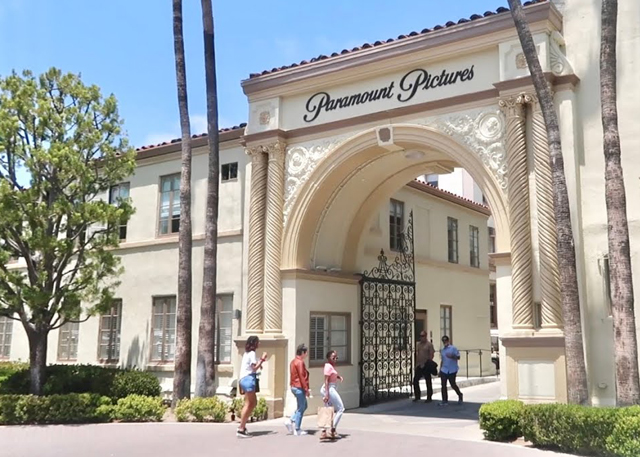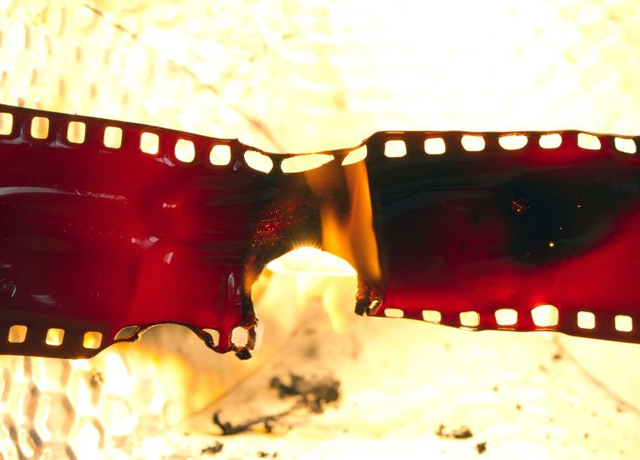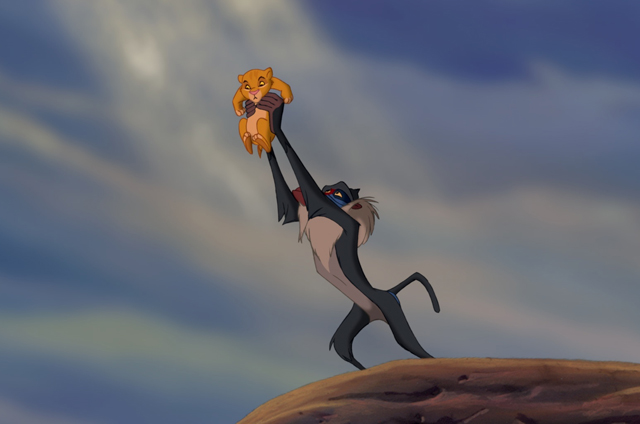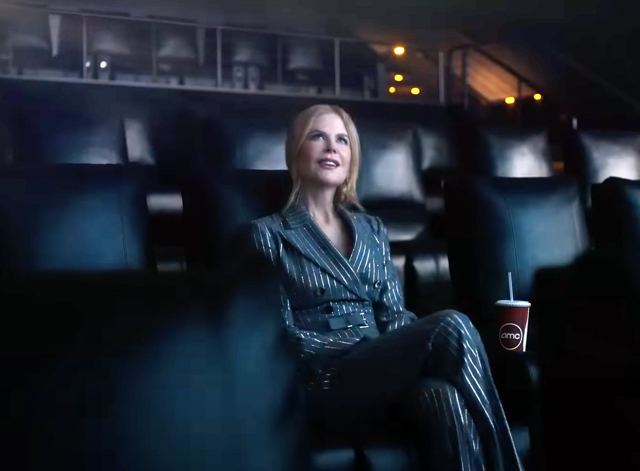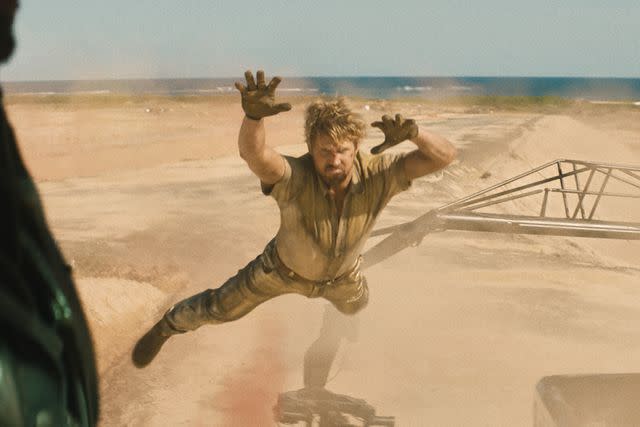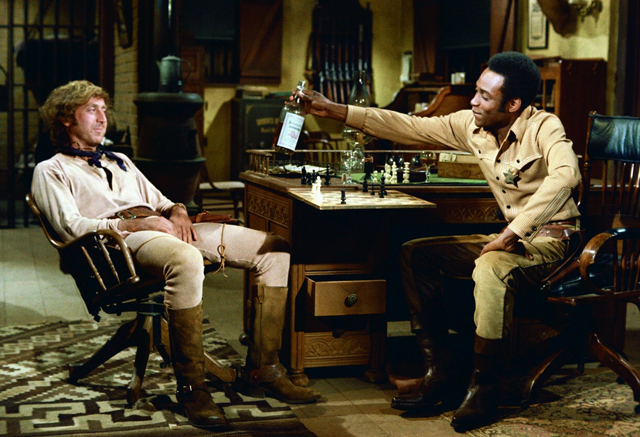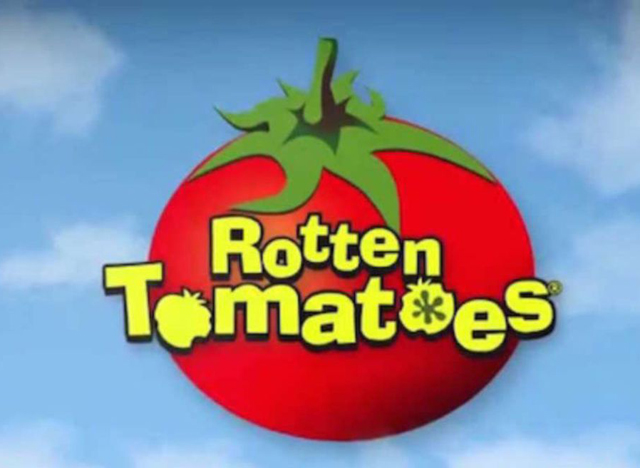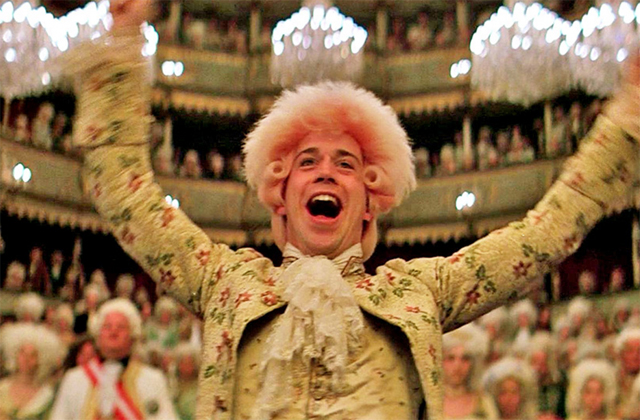
There are many right ways to create an engaging biopic for the big screen and also many wrong ways. Too often we see movies based on the lives of famous musicians take the latter route. There are good ones to be sure, but too often we see many musical biopics fall back on formula. What a lot of bad musical biopics seem to forget is that it’s not the songs that the subject wrote and/or sang that made them stand out, but the lives that they lived that offer up the true cinematic story. Some of the worst offenders, like this year’s Back to Black (2024) or 2018’s Bohemian Rhapsody don’t really tell us anything new about their subjects, but merely just show a point by point book report on the lives of these famous singers. The formula often involves the characters getting inspired to write their big hit song in the most convoluted way possible, and it glosses over how many great songs came into being which is many hours of fine tuning and rewrites, which truthfully don’t lend themselves very well to a cinematic experience. And then you have the very icky sort of biopic where you see a performer’s tragic story mined for empathy when it at the same shifts the blame away from the people who drove the person to an early grave; probably due to the fact that those same people probably still control the estate that the movie had to gain permission from in order to make the movie. But then you have the good musical biopics that aren’t afraid to show a person’s life warts and all in the knowledge that it will be more honest and interesting movie character, such as movies like 8 Mile (2002) or Walk the Line (2005), both of which were movies that got the personal approval and involvement of the musician themselves. And then there are also good biopics that are completely outside of the norm that they take the musicians story into an entirely elevated level, like The Doors (1991) or Rocketman (2019). I would however say that the best musical biopic that has ever been made would be a film that entirely flies in the face of actual history. That would be the Oscar-winning Amadeus (1984).
Amadeus can be described as a musical biopic, while at the same time also be considered a complete work of fiction. The reason it falls into a biopic designation is because it depicts the life of one of the world’s greatest composers, Wolfgang Amadeus Mozart. It shows us the life he led during his most productive years composing in the court of the Austrian-Hungarian Emperor Joseph II in the city of Vienna. We also see him compose his most famous pieces of work, including the operas The Marriage of Figaro, Don Giovanni, and finally The Magic Flute. But the movie isn’t about any of that, nor is it really about Mozart either. The film instead is told from the point of view of another character; a rival composer named Antonio Salieri. Salieri retells his life’s story to us, which so happens to coincide with Mozart’s, and we see how jealousy and insecurity led him down a path towards destroying Mozart completely, which he ends up succeeding in as Mozart’s misfortunes lead him to an early grave. But to Salieri’s eternal frustration, he sees Mozart’s musical far out live his short life while Salieri grows old and watches his own legacy wither in Mozart’s shadow. It’s only fitting that the entirety of the film is framed as a confessional, with Salieri recounting his story to a priest after feeling the guilt of having destroyed Mozart’s life and in turn his own. Amadeus is not a movie about the music that both of these musicians left behind, but rather about the way that fame destroys the soul. At the same time, the movie is lavishly constructed to recreate the time period of Mozart and Salieri in great detail, and it does touch upon the actual events that shaped their lives as well. The success of Amadeus is that the story at it’s center and the fascinating characters within are what drive the film along. The movie is not concerned about hitting all the historical notes perfectly and in order. And in Amadeus’ case, it’s a movie more about speculative history rather than true history.
The playwright Peter Shaffer who first penned to script for the stage play Amadeus described his story as a “fantasia on the theme of Mozart and Salieri.” It was his way of telling us upfront that this story was never meant to be taken as literal history, but rather a universal narrative about jealousy and corruption that just so happened to center around real historical people. The idea of a rivalry between Mozart and Salieri dates back to a play written by Alexander Pushkin in 1830; a mere couple of years after the death of the real Salieri. Pushkin’s play was even more accusatory of Salieri, with him actually murdering Mozart at the very end. Shaffer’s play is not as harsh towards Salieri, merely showing him as being petty and conspiring to deny Mozart success, which in turn aggravates the alcoholism that ultimately ends his life. Even still, the original Pushkin play is still credited as the inspiration that drove Shaffer to write his own play. It was Shaffer’s idea to make the center of his story and tell it from his point of view. This is a great addition to the narrative because it adds the unreliable narrator element to the play. Yes, we are witnessing the life of Mozart, but it’s through the lens of someone who was jealous of him, and was willing to view him in the most negative light. And yet, through even Salieri’s spitefulness, there is a reverence for the music. The theme of divine interaction plays throughout the story of Amadeus, with Salieri often complaining about how God gave such a gift to a boorish, ill-behaved man-child like Mozart. And the brilliance of Shaffer’s play is that no such gift was ever given; Salieri is only seeing Mozart in that light because he barely knows the man. He only sees the party animal and clown that Mozart could be in a public fashion, but he never saw the struggling artist that he was in private; that is until the very end when he sees the true genius in what ends up being his final hours. The original play debuted to great acclaim in London in 1979, and it soon made it’s way to Broadway afterwards. Many celebrated actors came and went in the lead roles; one such combination even included heavyweights like Tim Curry as Mozart and Ian McKellan as Salieri.
It’s no surprise that Hollywood was eager to turn this hit play into a big lavish screen adaptation. Oscar-winning producer Saul Zaentz managed to secure the rights to the play, and he was eager to re-team with Czech filmmaker Milos Forman for the film, having found success before with their film One Flew Over the Cuckoo’s Nest (1975). Peter Shaffer was granted the opportunity of adapting his own play, and he managed to find a good collaboration with the spirited Forman. The one big thing that Forman wanted to break away from the original play was the way it was staged. Amadeus was a bit of an Avant Garde play in that it was very minimalist when it came to the setting. In the case of it’s Broadway run, the play was performed “in the round” meaning that the audience encircled the stage, so the actors had to perform merely with simple props and no scenery. Forman had no interest in telling this story merely through the power of suggestion. He wanted to make Mozart’s world come alive, and this was thankfully something that Peter Shaffer also agreed to. To find the right kind of place to recreate the Vienna of Mozart’s lifetime, Forman looked to his own native land and chose the city of Prague to be the shooting location for this project. Prague in the early 1980’s was still behind the Iron Curtain of Soviet influence, so it wasn’t easy to bring a big Hollywood production to the city, even if the director was a native born son. They did manage to get the Czechoslovakian government to grant permission, and shooting began in the very well preserved city, which Milos praised as being free of “all that modern shit,” as he described in the movie’s making of documentary. Shooting in Prague instead of Vienna was not too out of character for a movie centered on Mozart’s life, as Prague maintains more of it’s 18th century architecture to this day, and it was also a place where the real musician did perform from time to time. One of the places that the real Mozart frequented in Prague was the majestic Estates Theater, which the film makes incredible use out of in the staging of some of Mozart’s most famous musicals. In every sense of the word, Milos Forman took a minimalist play and gave it the epic makeover that it deserved.
One other bold move by Milos in the making of the film was in the casting of the characters. Typically, a high brow historical epic will try to give a sense of authenticity to the performances of the actors as part of their placement in their selective time period. This usually means casting actors with affectations, or who just have British accents as that commonly seems to be Hollywood’s go to high class way of speaking. For Amadeus however, Milos decided to cast mostly American actors in the key roles, and not have them put on an accent. This would seem unusual if the movie were trying to be any other historical epic, but in Milos Forman’s hands, it worked. The key was in finding the right actors who could convey the characters perfectly, to the point where the accents don’t matter. For Salieri, Milos found the greatest possible choice in veteran stage actor F. Murray Abraham. Abraham has to carry the film on his shoulder, conveying all the complexity of Salieri, while straddling that fine line between villainy and empathy. And Abraham’s performance is note perfect, especially in the non-verbal way that he acts through just his facial expressions alone. There’s a brilliant scene in the movie where Salieri attempts to humiliate Mozart with a comical entry music theme written just for him, and Mozart reworks it in front of him and turns it into something grander and the way Salieri’s expression sinks into depression is just a brilliant work of acting on Abraham’s part. Of course, his performance is matched brilliantly by Tom Hulce’s turn as Mozart. It was probably no coincidence that Milos Forman selected one of the stars of Animal House (1978) to be his Mozart, given the party animal nature of the character. But there is a profoundness to Hulce’s performance as well, especially in the film’s latter half when we see Mozart deteriorate. He perfectly captures this sense of stunted youth while at the same time portraying the seriousness he devotes to delivering his music. And casting the very American Hulce in the role of Mozart in a way helps to contemporize the story a bit more, offering a more universal connection between the tragedy of Mozart’s life and how the perils of fame manifest in today’s society. It’s a gamble on Forman’s part that pays off, and that’s very much a testament to the strengths of the actors.
For a lot of musical biopics it’s the music itself that mostly appeals to the audience. Most of the bad musical biopics tend to put the famous songs front and center rather than exploring the complexities of the musician playing them. What is special about Amadeus is that it gives us the explanation about why music affects us so much. Salieri isn’t so much a great composer as he has the ear to recognize great music. It’s a duel edged sword that defines his character; he can recognize greatness in music, but is incapable of composing it himself. He complains to the priest that is hearing his confession, “We would God implant the desire in my head, and then deny me the talent.” Not that Salieri was a bad composer by any means. Historically, he was celebrated in his time and even found favor with the Emperor. But, there’s another brilliant scene that defines the supposed curse that he believes he has. In his confession, Salieri describes the brilliance of Mozart’s music, picking apart each instruments role in creating a sublime tune, and it’s all through just reading the notes written on the page. He can understand the language and hear it in his head, but is incapable of creating it on his own. It’s been said that this revelatory scene really helped people become fans of orchestral music, because cinematically the film broke down musical theory in a way that anyone could understand and relate to. And it becomes a theme that runs throughout the whole movie. Salieri cannot escape the adoration he has for the music even as he despises the man who wrote it. He uses his influence to sabotage the staging of Don Giovanni and yet also attends every single performance as an act of worship. It’s ultimately what makes the finale so profound, as the film reaches a climax where Salieri is in the position of having to dictate for an ailing Mozart. In that moment, Salieri finally gets to participate in the genius of Mozart’s work, and as a result, finally find himself on common ground with him. Very few other musical biopics can make the music such a crucial part of the character’s arc in the story.
For Milos Forman and Peter Shaffer, the narrative is much more than just a look into the lives of historical figures. At it’s heart, it’s a story about human mortality, and how we devote our lives to being remembered. Art of any kind is a great way to leave one’s mark, but as Amadeus shows, the way we create that art also matters. It’s the thing that separates Salieri and Mozart in the end. Salieri obeyed the rules, did everything he could to win favor and stifle competition, and what that got him was being forgotten to most of history. Mozart on the other hand broke the rules constantly, burned many bridges along the way, committed a lot of self-damage, and is still remembered fondly to this day. That’s the curse that Salieri feels that he has, that he does everything the right way and has nothing to show for it, and yet Mozart is able to stumble his way to immortality based on his raw talent. But, Amadeus also warns us that fame is not the golden ticket that we all would like to think it’d be. Forman and Shaffer posit this question to us through the different examples of the two lead characters. Salieri lives a long and comfortable life, but is isolated through crippling regret. And Mozart lives a rocky, often painful life and dies penniless, but is immortalized through his enduring art. One desires to be the greatest, while the other wishes to not have the so many notes crashing around in his head. While so many other biopics revel in the moments of genius that define their subjects lives, Amadeus stands as a cautionary tale about how ambition and fame can sometimes destroy the soul. It doesn’t give us a how to of what made Mozart a genius. It honestly never explains how he became so brilliant other than it was just something he was born with. Of course, the movie itself never has the historical touchstones as things that matter in the story. In the end, it is fictionalizing a theory about how someone like Salieri may have plotted against Mozart. And through that we get the themes of jealousy, ambition, and the suffering through one’s art across in a captivating character study. Also, the music is still fantastic to listen to.
The brilliance of the movie’s tackling of it’s themes comes across perfectly in one of the first scenes. When the elderly Salieri first meets with the priest, he plays examples of his music, to which the priest confesses he is unfamiliar with despite how beautiful they sound. Then, to prove his point, Salieri plays the opening notes from Mozart’s “A Little Night Music” and the priest immediately recognizes it. In that scene, we see exactly what drives the character of Salieri; the tragedy of time leaving him behind. But after Salieri tells his story to the priest, the movie ends with him feeling a bit unburdened and finally comfortable with himself; self proclaiming his presence as the patron saint of mediocrities. In a way, that’s what the story of Amadeus has done. It has put Salieri back into the narrative of Mozart’s legacy, and uses him as the counterpoint to what made Mozart so special. No other musical biopics have made their central figures stand out as strongly as these archetypal symbols of human geniuses and human fallibility. One of the great legacies of this movie is that it did help spark a renewed interest in classical music. The movie’s soundtrack, which featured new orchestrations of original pieces composed by both Mozart and Salieri, became a best-seller and performed well on the charts alongside many contemporary pop artists of the time. The movie also went on to sweep through the Oscars, winning eight including Best Picture, along with a career second award for Milos Forman for Best Director, a first for Peter Shaffer for his adaptation, and a win for F. Murray Abraham for Best Actor, which he won in competition with his co-star Tom Hulce. Even 40 years later the movie still feels timesless and strangely even more relevant to today. In an era of social media, the Salieris of the world have been given more of a voice and that has resulted in increased levels of online bullying and organized attacks like review bombing with the purpose of destroying one’s work of art as well as the artist themselves. But, the movie shows a more complex portrayal of human fragility than anything else, and how someone like Salieri can be corrupted so easily through his own feelings of inadequacy. The complaint leveled at Mozart’s music in the film is that he creates “too many notes,” but the movie itself manages to get every note right and creates a beautiful symphony of story and character that stands so much higher than any other musical biopic out there.
